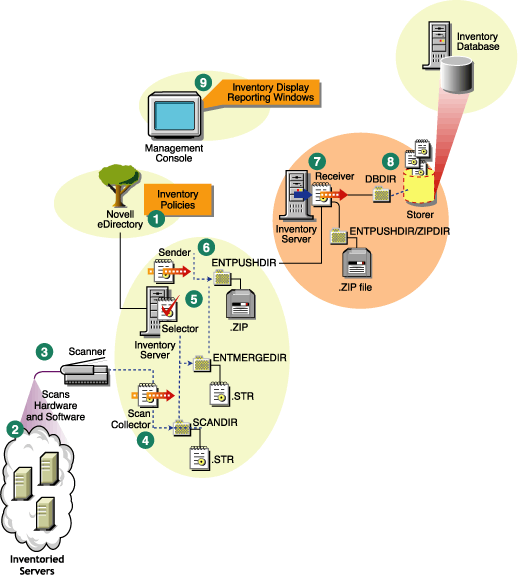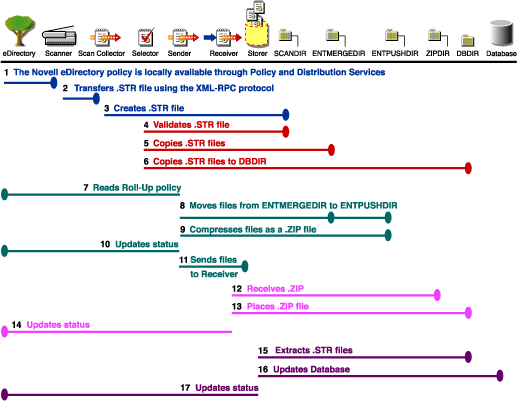The following illustration depicts rolling up the scan data across servers, which is explained below:

If the inventory deployment rolls up scan data across servers, the process of scanning is as follows:
NOTE: The next-level Inventory server can be located on the same eDirectory tree or on a different eDirectory tree.
On the Intermediate Server, the Receiver copies the file in the enterprise push directory (ENTPUSHDIR). On the Intermediate Server with Database, or the Intermediate Server with Database and Inventoried Servers, the Receiver places the file in ENTPUSHDIR and places the file to the database directory (DBDIR).
On the Root Server, or the Root Server with Inventoried Servers, the Receiver copies the file to the DBDIR only.
The following illustration lists the sequence of scan operations done by each Inventory component:
